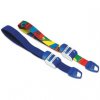DesertMedic66
Forum Troll
- 11,349
- 3,518
- 113
I've heard of it but have never needed to use one. We carry extra BP cuffs in the ambulances so we can use them. We also carry triangle bandages and CATs.
The main issue with the BP cuffs is that they start to loose pressure so you have to constantly check the pressure and fill it back up. The main issues with the CATs that we have is that the stick that we turn is plastic and can break fairly easy.
But once again I've never had to use a TQ on a call before.
The main issue with the BP cuffs is that they start to loose pressure so you have to constantly check the pressure and fill it back up. The main issues with the CATs that we have is that the stick that we turn is plastic and can break fairly easy.
But once again I've never had to use a TQ on a call before.

